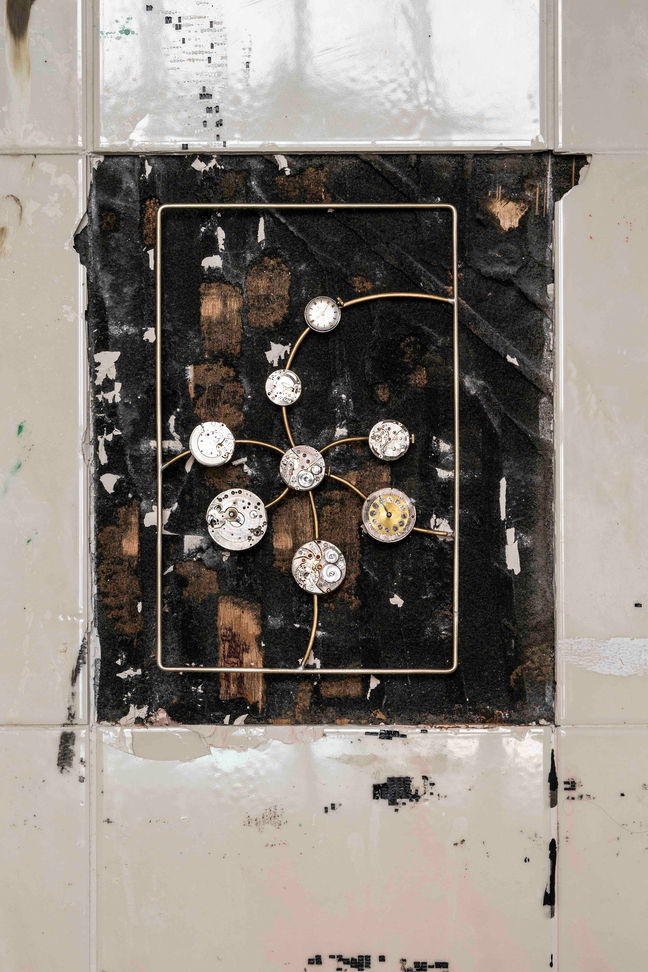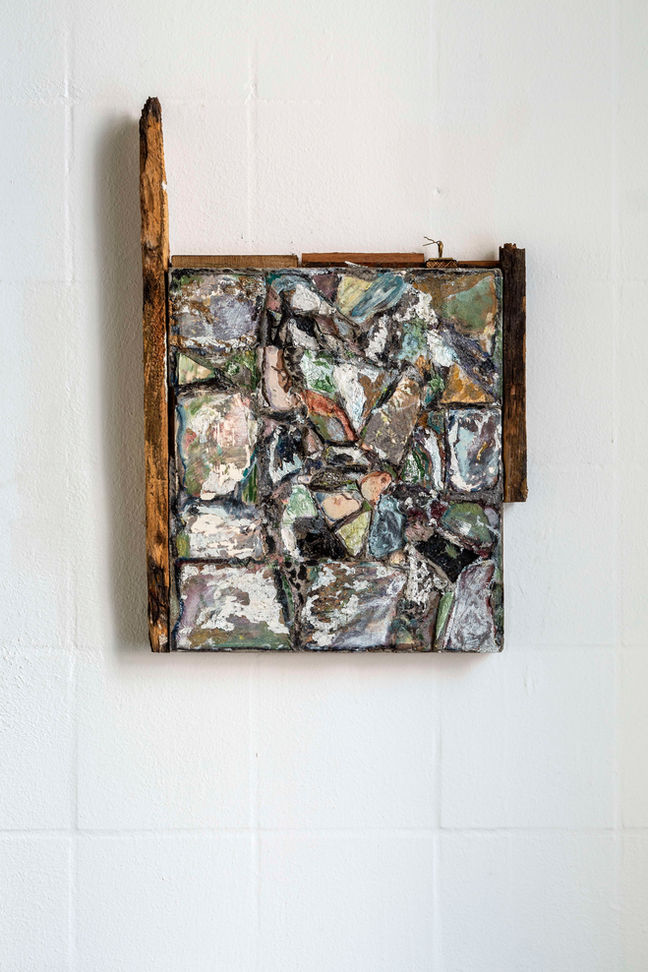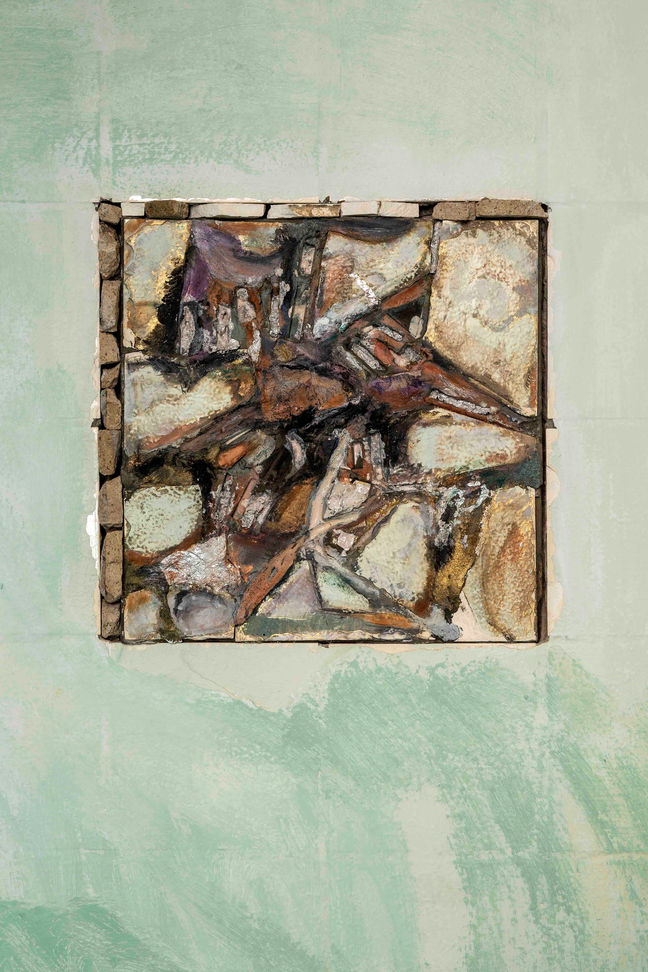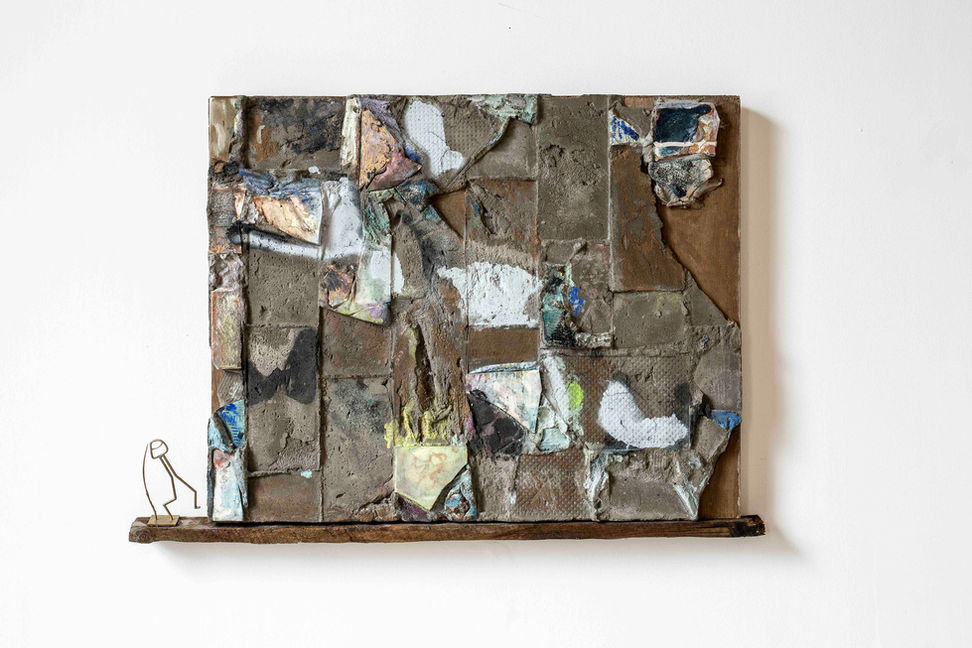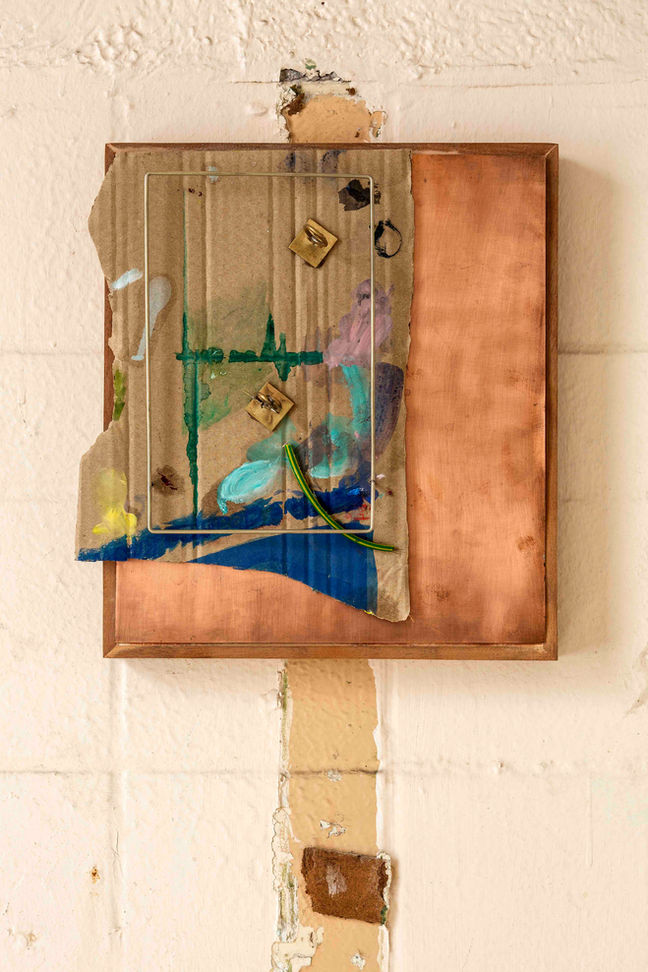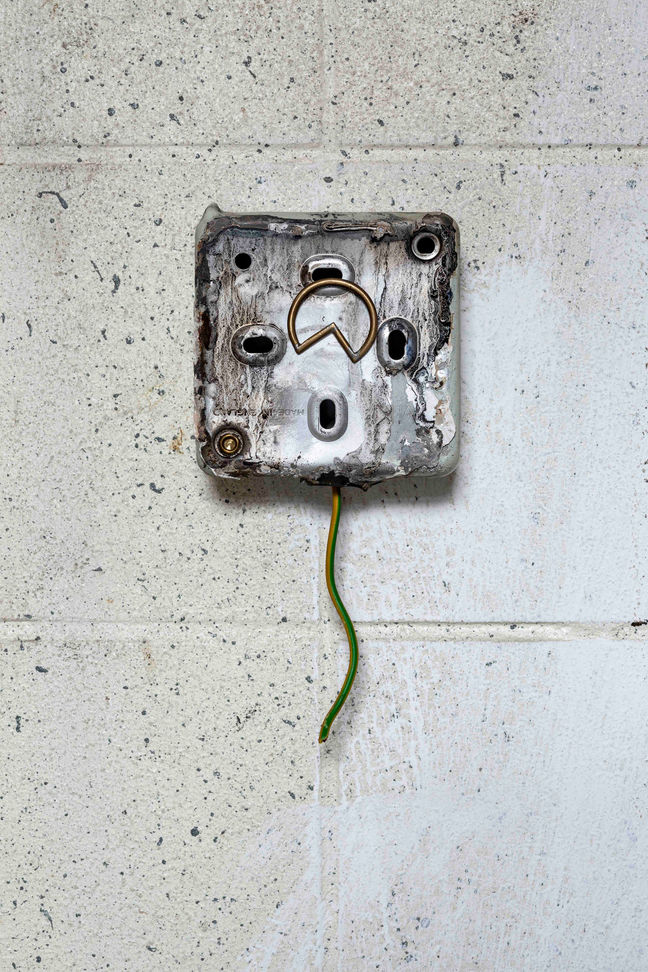Halo Nevus
Sara Barker
Watch Movements
9 June - 15 July 2023

Sara Barker, Watch Movements IIII, 2023, Installation view. Photo: Keith Hunter.
Digged down to the vault
through sediment and stasis
these dualities unearthed a set.
Stressed, built, propped,
unpeeled, debated, preserved
and sealed with glass.
Quieted
Miniature unfolds in on
all these uses and times
spatialised only toward its boundaries.
The perimeter tableau moves reality
while fracture separates geologically
Bodies compressed
in acts under rock faces.
Allowing a crevice or deep fissure
to expose a world outside of this
The origins and the place of ending
In sleeping and in death
Transcendence to this elsewhere
Watch movements
for spaces or repair.
- Sara Barker

Sara Barker, Watch Movements, Gallery 1, Installation view. Photo: Keith Hunter
Sara Barker’s (b. 1980) first solo exhibition in Glasgow for six years captures a unique site-specific response. In Watch Movements, Barker creates a careful dialogue with the Patricia Fleming Gallery’s new site, at a critical moment before the full renovation of the building. This exhibition marks the gallery’s reopening in its new location near the banks of the River Clyde.
Manchester-born Sara Barker has built up a singular body of work since the early 2000s, occupying the space between painting and sculpture while consistently establishing relationships with language and poetics. Previous solo shows have been held at Fruitmarket in Edinburgh, Ikon in Birmingham, Cample Line in Dumfries, and The Baltic, Gateshead. Over the last few years Barker has completed major outdoor works for Leeds Art Gallery and Clyde Place, Glasgow.
This new exhibition offers a conversation of sorts with the Glasgow-based artist’s last show in her home city. This was held at Mary Mary, on the north side of the Clyde, and consisted of five large wall-based relief-sculptures in a pristine gallery setting. By contrast, for the current show, Barker was invited to engage with derelict environments, filled with the detritus of previous occupancy. The invitation to work in this inbetween space allowed the artist to make works that embed themselves in, and emerge from, the fabric of the building itself. In so doing she converts the interiors of Alexander Beith McDonald’s (1847-1915) 1895 structure, a former-police station, into a kind of found artwork.

Sara Barker, Watch Movements, Gallery 2, Installation view. Photo: Keith Hunter

The rooms now housing Patricia Fleming Gallery, which Barker describes as “loaded and atmospheric,” were used as changing and shower areas for the police station, which later became a courtroom and police training college. Preparation for the exhibition involved an exploratory process of working with and against the confines of the space, using external materials where needed to prize creative potential from existing features of the walls, doorways and floors. Barker states: “I began thinking of the whole building (corridor with four spaces off) as an artwork, experimenting with surfaces, heat-gunning off layers of paint, chipping away tiles, cleaning parts, leaving others.”
The site-specific nature of the show has allowed Barker to develop a new set of compositional approaches, with the idea of recessed space running throughout. Several works take as their basis sets of tiles dug out of walls by the artist. Combined with rubble, paint, foil, and other materials, bound with poured mortar inside a frame, these jewel-like slabs or tableaus read as paintings, spatial drawings, bas-reliefs, or cross-sections of miniature excavations. Some have been inserted back into the gaps created by their initial removal. These pieces establish suggestive relationships with the layers of ceramic grids, and between the scale of an individual square within the grid and the room as a whole.
Sara Barker, Paraphernalia, 2023, Installation view. Photo: Keith Hunter

Sara Barker, Watch Movements, Gallery 3, Installation view. Photo: Keith Hunter
In other cases, Barker has worked more closely with the building’s state of incompletion. Unfilled recesses in the tiles are fronted with glass to create what the artist calls “miniature sealed universes.” Empty volumes sitting flush with walls or floors become “hiding places” for assemblages in brass and metal, containing numerals, circuit boards, and watch faces. The shape of these little hollows is loosely suggestive of vaults or archaeological find trays.
Sara Barker’s work is characterised by its breadth of literary allusion—reading poetry and prose often spurs her creative processes. For this exhibition, the artist’s interest in exposing and framing apertures within a historic building is informed by ideas of time-space shifts and otherwordly and subterranean settings in science-fiction and fantasy, such as Philip Pullman’s His Dark Materials, Lewis Carroll’s Through the Looking Glass, and C.S. Lewis’s The Silver Chair. The motif of the clock or gauge, which recurs throughout the exhibition, speaks to this subtext, while also alluding to secret or in-between periods in the history and routines of the site, including its past use for underground raves.
Emphasising the importance of experiencing particular rooms as aesthetic wholes, Barker states: “one instance in which this happens in quite a theatrical way is in the former shower cubicle, a tiled area standing proud in Gallery One….I’m thinking of it as a large, unified artwork, a shadow-box or an aerial view of a vitrine. The painted and cleaned graffitied tiles respond to an oversized metal pole spanning the space. These are all constituent elements of the larger work.” In a sense, Barker converts Patricia Fleming Gallery into a single, multifaceted artwork. Its constituent materials and architectural features are customised and repurposed to become elements of an inhabitable sculpture, site-specific installation, or shadow-world of imagination.
The artist would like to thank Tim Facey and Tom Harrup.

Sara Barker, Oxford House, 2023, tiles, mortar, paint, wood, 33.5 x 29 x 4.5 cm
Photo: Keith Hunter

Sara Barker, Watch Movements, Gallery 3, Installation view. Photo: Keith Hunter
WORKS

